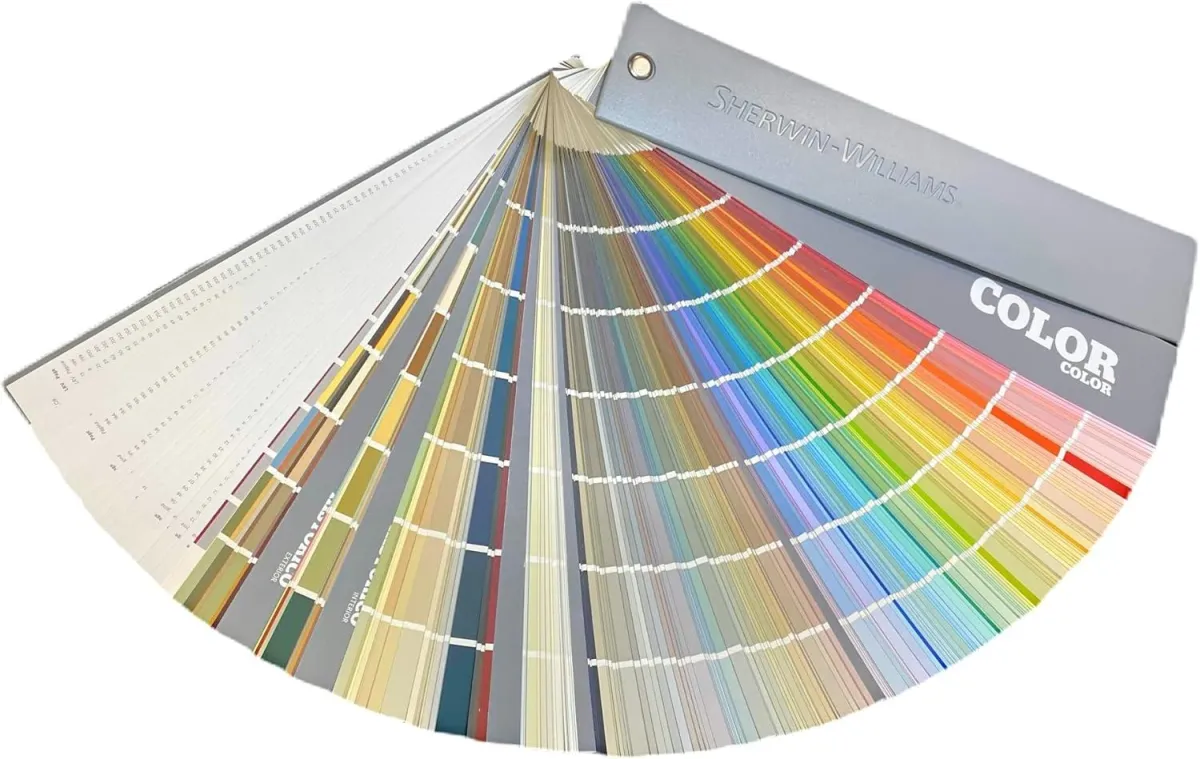Painting Blog
Learn about our painting processes and techniques from professionals.

How to Navigate and Choose Colors from a Paint Deck
How to Navigate and Choose Colors from a Paint Deck
Choosing the right paint color for your project can feel overwhelming, especially when faced with the extensive color decks from Sherwin-Williams, PPG, or Benjamin Moore. But don’t worry! With a little guidance, you can simplify the process and make confident choices. Here’s a step-by-step guide to help you read a color deck and pick the perfect shade for your project.
Understanding the Layout of a Color Deck
While the organization of color decks can vary by brand, they generally follow a consistent structure:
Warm to Cool Arrangement: Colors are typically arranged from warm (reds, yellows) to cool (blues, greens).
Special Sections: Many decks have sections dedicated to neutral colors, whites, pastels, or even signature collections specific to the brand.
Decoding a Swatch Strip
Each swatch strip in a color deck tells a story about its shades. Here’s how to interpret it:
Middle Color: This is the base shade of the strip. It’s a great starting point for exploring variations.
Top of the Strip: As you move upward, the colors become lighter, with increasing amounts of white added to the base.
Bottom of the Strip: Moving downward, the shades get darker, as more black is added. The darkest shade often approaches black but retains undertones of the base color.
The Challenge of Blacks
Blacks in a color deck aren’t all the same. Each has subtle undertones that can be challenging to distinguish. Proper lighting is essential when comparing black shades to ensure you understand their nuances.
Factors to Consider When Choosing Colors
Lighting: Lighting can significantly impact how a color appears in a space. For instance:
Yellow-hued lighting will cast warm undertones onto your chosen color.
Natural light varies throughout the day, influencing the appearance of colors in real-time.
Environment:
Making the Selection Process Fun
Once you know the theme or mood you want to achieve, narrowing down your options becomes much easier. Use the tips above to confidently navigate the color deck and embrace the creativity of color selection.
Final Thoughts
Color selection doesn’t have to be a daunting task. By understanding the layout of a color deck and factoring in lighting and environment, you can make the process enjoyable and rewarding.
For more tips and insights on paint and color selection, explore detailed blog posts or check out additional videos on our YouTube channel. Happy painting!

